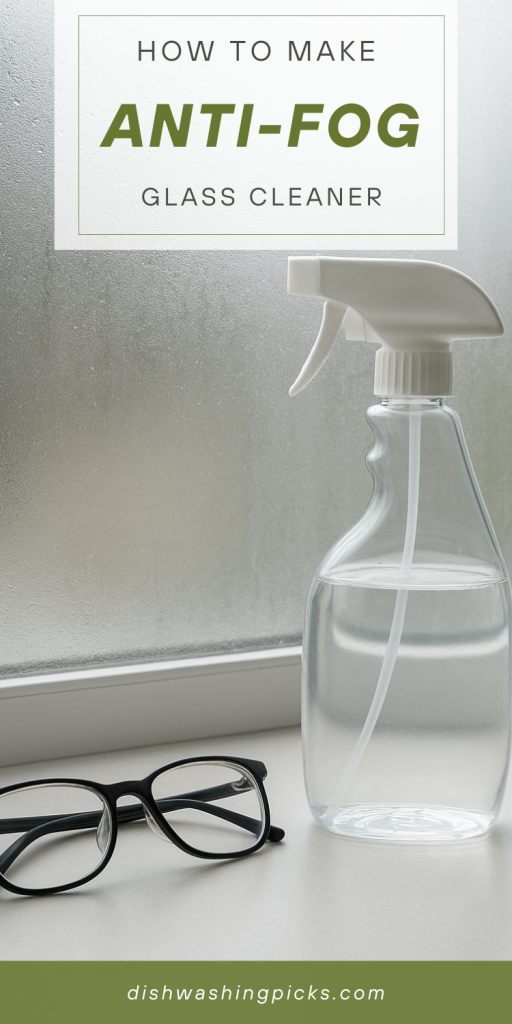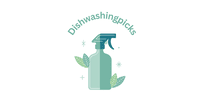
Why Anti-Fog Glass Cleaner Is a Game-Changer
Ever hopped into your car on a chilly morning, only to spend the first ten minutes wiping down foggy windows with your sleeve? Or maybe you’re rocking glasses and step outside on a humid day—boom, instant whiteout.
Annoying, right?
Here’s the good news: you don’t have to keep fighting the fog. With just a few everyday ingredients, you can whip up your very own anti-fog glass cleaner at home. It’s cheap, quick, and—bonus—way more satisfying than buying an overpriced bottle from the store.
Imagine actually seeing through your glasses, bathroom mirror, or car windshield without smears and condensation. That’s what we’re making happen here.
Why Glass Fogs Up in the First Place
Before we get into mixing bottles like a mad scientist, let’s pause for a quick science moment.
Fog on glass happens when warm, moist air hits a cool surface. Think: stepping out of a hot shower into a cold bathroom, or breathing into your glasses while wearing a mask. That temperature difference makes water vapor condense into tiny droplets.
An anti-fog cleaner works by leaving behind a thin, invisible film that prevents those droplets from forming. In plain English? The water spreads evenly instead of clumping up, so you get clear vision instead of a blurry mess.
What You’ll Need (Spoiler: It’s Probably Already in Your Kitchen)
Here’s the fun part—you don’t need fancy lab gear. Most DIY anti-fog solutions call for:
- Distilled water (tap water works, but distilled prevents streaks).
- White vinegar or rubbing alcohol (cleans the surface and dries fast).
- Dish soap or baby shampoo (the secret anti-fog ingredient).
- Spray bottle (to store and apply your magic potion).
- Microfiber cloth (for streak-free wiping).
See? Nothing scary. In fact, you might already have everything sitting under your sink right now.
DIY Anti-Fog Cleaner Recipes
Ready to play chemist? Here are a couple of simple formulas to try:
1. The Classic Dish Soap Mix
- 1 cup distilled water
- 1 tablespoon white vinegar
- 1 drop dish soap
Shake it up in a spray bottle, spritz on glass, and wipe clean. That tiny drop of soap leaves behind a thin coating that stops fog in its tracks.
2. The Baby Shampoo Hack
- 1 cup distilled water
- 1 teaspoon baby shampoo
This one’s especially popular for glasses and goggles. Apply a little with a microfiber cloth, buff it in, and you’re good to go.
3. The Rubbing Alcohol Quick-Dry Version
- ½ cup rubbing alcohol
- ½ cup water
- 1 drop liquid soap
This dries lightning-fast, which makes it perfect for car windows.
How to Use It (Because Application Matters)
Here’s the trick: it’s not just what you make, but how you use it.
- Spray the solution lightly onto the glass surface.
- Wipe evenly with a microfiber cloth.
- Let it sit for a few seconds, then buff gently.
For glasses and mirrors, you don’t want to drench the surface—just a light coat is enough. For car windows, go a bit heavier, then polish it out.
Pro tip: Always test on a small corner first to make sure it doesn’t leave streaks or react oddly with coatings (especially for fancy sunglasses or treated windshields).
Extra Tips and Tricks
- Reapply regularly. Homemade anti-fog solutions aren’t permanent. Expect to reapply every few days (or more if it’s raining cats and dogs outside).
- Don’t over-soap. More soap doesn’t mean more power—it just means streaky glass. One drop is plenty.
- Keep a travel-size spray. For glasses or ski goggles, a mini bottle in your bag is a lifesaver.
- Pair with good habits. In cars, try cracking the window or using the defroster alongside your spray for best results.
Troubleshooting: If It’s Still Foggy…
What if you tried it and your glass still looks like a steamed-up bathroom mirror? A couple of things could be happening:
- You used too much soap—wipe again with plain water and buff it out.
- The surface wasn’t fully clean—give it a deeper wash first.
- The humidity is just extreme (looking at you, sauna bathroom). In that case, reapply more often.
Sometimes it takes a bit of trial and error, but once you find your sweet spot, it’s smooth sailing (or clear driving).
Fog-Free and Fabulous
At the end of the day, making your own anti-fog glass cleaner is simple, cheap, and surprisingly effective. No more sleeve-wiping, no more risky driving with half-clear windows, no more bathroom mirror guessing games while shaving or doing makeup.
Next time your glasses fog up, instead of sighing and wiping them with your shirt, you’ll smile and think, “I’ve got just the thing for this.”
And the best part? You made it yourself.
